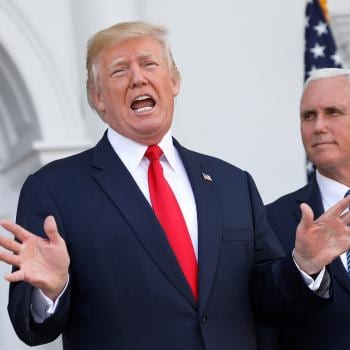A number of large, multi-site churches are beginning to rival denominations in size and influence. The largest church in the U.S. boasts almost 45,000 attendees on a typical weekend, meeting in 17 different locations.
America’s ten largest churches average 10.3 campuses each, with new campuses springing up almost monthly.

Multisite campuses typically offer live, rock-concert quality worship music, live announcements from a campus pastor, followed by a projected video message from the senior pastor or his designee.
Campuses function as mini churches. Each location employs a “campus pastor” who welcomes visitors, occasionally preaches and provides chaplaincy services to the local flock. Campuses offer many of the same activities as independent churches, including Bible studies, youth activities and mission outreach projects. The campuses receive professional marketing and centralized teaching from the main campus.
Most multisite churches establish campuses within the metro area of the mother church. For example, Christ’s Church of the Valley, America’s fourth largest church has 11 campuses, all within the greater Phoenix area. But it’s not hard to imagine CCV expanding nationwide at some point. In an earlier post I predicted that American Christianity would be dominated by about 200 megachurches by the year 2063, each with vast networks of campuses.
So will megachurches replace denominations? The answer lies in the past – the reason we created denominations in the first place.
A brief history of denominations
Most of our modern Protestant denominations were founded in the 1700s or early 1800s. Denominations ensured uniformity by:
- Standardizing beliefs and practices across a far-flung network of churches.
- Standardizing teaching by distributing printed Sunday school curricula to their congregations.
- Standardizing branding (logos, slogans, etc.) to help their congregations distinguish themselves and attract likeminded people.
- Standardizing decision making by creating a network of committees, synods and assemblies to decide policies and set direction.
But over the past fifty years denominations have ceded most of these roles. Individual congregations are much more independent than they once were, choosing their own curricula, dropping denominational labels, and shunning bureaucratic meetings.
And most significantly, denominations no longer enforce theological orthodoxy. In fact, denominational leaders have led their churches away from traditional teachings, particularly in the Mainline. Heresy no longer bubbles up from the bottom – it’s imposed from the top.
Back to our original question: will megachurches replace denominations? Yes, I see it as inevitable.
Because megachurches directly control their campuses, they are better equipped to fulfil the mission of denominations:
- It’s much easier to provide a standard set of beliefs and practices when your teaching is all coming from the same source.
- You can provide high quality video and app-based curricula by spreading production costs across multiple campuses.
- Standardizing branding is simpler when every campus bears the same name and logo, uses the same website and shares the same social media presence.
- You need less bureaucracy. Elders and campus pastors can respond to challenges quickly. Meetings can be scheduled as needs arise, rather than waiting months or years for scheduled conferences.
One more advantage: because multi-site churches are centrally led, they’re much less likely to erupt into public squabbles that make Christians look bad (and the press loves to cover). No messy debates over human sexuality or political issues.
Of course, there are dangers. Building a network of campuses upon one teacher exposes them all to risk should he fall. The damage could be catastrophic. But is this any worse than the slow death we’re seeing in traditional denominations? And if the worst happens, the multi-site church has a bench full of campus pastors ready to step in and take his place. An errant pastor can be replaced much more easily than an errant denominational hierarchy.
We can’t turn back time. Multi-site churches are already performing many of the roles denominations used to. Just as our modern denominations replaced the colonial ones (Quaker, Anabaptist, Puritan, etc.) multi-site megachurches are replacing the denominations we grew up with.












